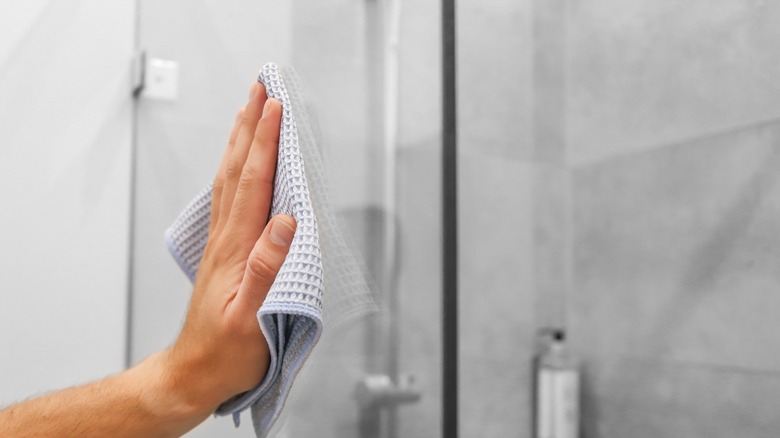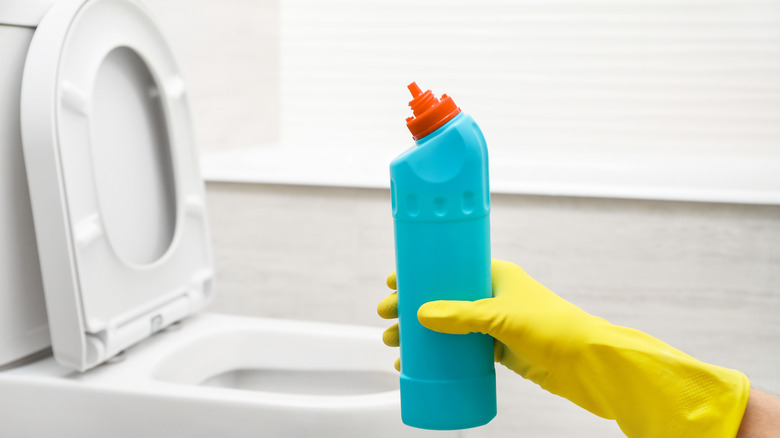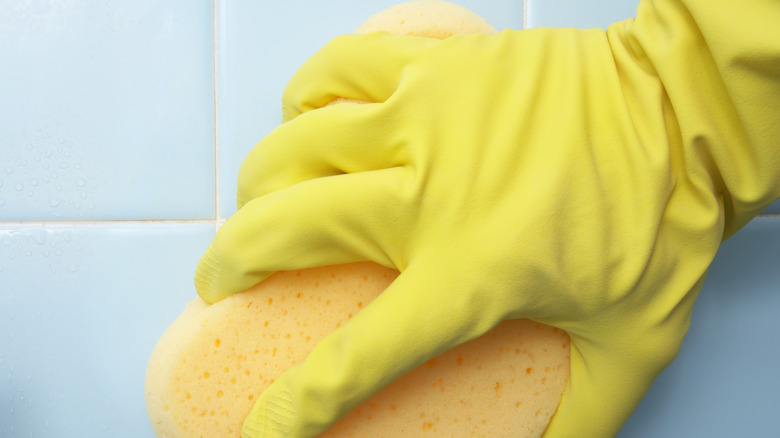Why Do People Use Toilet Bowl Cleaner To De-Grime Their Shower & Should You?
It's easy to think of your toilet and shower on two completely separate levels when it comes to germs and bacteria. After all, your shower is the place you get clean, while your toilet is where you partake in activities that, to put it mildly, aren't quite as sanitary. While there are obviously significant differences between these two fixtures, one element remains the same: Both attract mold. Your shower is constantly exposed to moist conditions, in which mildew thrives. You might not notice it at times, but the spores are present if left for too long in damp areas.
It's natural to reach for toilet bowl cleaner when you need to scrub your porcelain throne, but did you know you can use the same product in your shower? Toilet bowl cleaner can de-grime other areas in your house too, and you can trust it works since it's formulated for an appliance that sees considerably more bacteria than almost anything else. Using toilet bowl cleaner is a popular choice among those who prefer to keep their spending to a minimum, but still want an efficient formula. While the label might confirm that the solution is made solely for commodes, the same ingredients that fight mold inside your bowl can also battle it in the shower.
The all-in-one bathroom cleaner
Toilet bowl cleaners are formulated to eradicate spores created by excessive moisture and damp conditions. Since your bathroom harbors this atmosphere due to baths, showers, sinks, and a toilet that holds water constantly, it's crucial to clean tiles and surfaces with a product that will eliminate mildew wherever it's likely to thrive. Since your bath and shower are two of the dampest places in this room, along with the toilet, it's safe to say the same cleaner won't harm the former fixtures. One major perk of using toilet bowl gels is the consistency, which allows the formula to cling to surfaces and remain there while you scrub. If you're wondering how long toilet bowl cleaner should sit before scrubbing, wait for 10 minutes at least.
By adding toilet bowl gel to your shower's grout, you can create a layer that soaks in to ensure all the mildew is gone when you rinse and wipe it away. Toilet bowl cleaner notably contains hydrochloric acid, which is extremely effective at dissolving and breaking down hard water stains, alongside mold and mildew buildup. Between this and the other tough ingredients, you have a powerful formula that'll remove all the worrisome detritus that can turn your shower into a breeding ground for bacteria. Some of these products also contain bleach, which can assist with tackling tricky marks and discoloration.
Toilet bowl cleaner trumps bleach
It's better to use a toilet bowl cleaner rather than just plain ol' bleach if you're planning to combine your cleaning products, to save both time and money. While bleach is a great disinfectant to keep around thanks to the sodium hypochlorite that fights off viruses and other harmful germs, it is too diluted to permanently eradicate the spores in most cases. Using a toilet bowl cleaning product will disinfect the area, remove stubborn stains, and get rid of mold where it starts so that more doesn't spread throughout your bathroom.
By keeping just this one product under the sink or in your supply closet, you have an easy way to keep your shower sparkling and bacteria-free for longer. Purchase a larger size of the cleaning brand you like since you're using it for a bigger area, and you'll be less likely to run out on cleaning day. Keep in mind that you don't need to use more than 4-6 oz of toilet bowl cleaner for your bowl, due to its intensity, leaving plenty left over. If it's good enough for the most popular seat in the house, it's good enough for your bathing areas.


